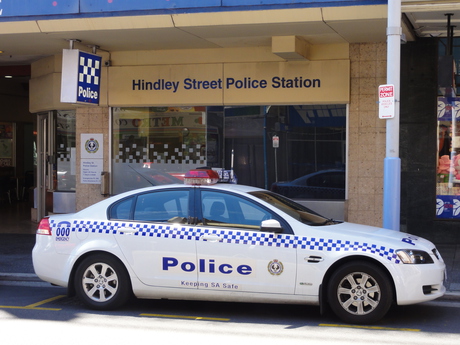South Australia's GRN upgrade

Motorola Solutions has been awarded a $175 million contract to upgrade and maintain the South Australian Government Radio Network (SAGRN).
South Australian Emergency Services Minister Tony Piccolo said the greatest benefit of the project was increased safety for the community and emergency service personnel.
“The South Australian Government is making a significant investment to give our emergency services secure and reliable voice and paging communications,” said Piccolo. “This will support them from their day-to-day operational activities through to times of emergency or crisis.
“Furthermore, Motorola has confirmed around 25 new full-time equivalent positions will be created in South Australia during the upgrade and ongoing management of the SAGRN, as well as a direct investment of nearly $40 million in locally based industries.
“Motorola put forward an excellent proposal for the upgrade and ongoing management of the network.”
The SAGRN is an existing Motorola P25 environment that has been in operation for over 10 years. It’s used by just over 20 different agencies, from the usual emergency services through to others such as fisheries and public transport.
It is also one of the largest systems in the world, covering 220,000 km2 and having just over 20,000 users. One of the major parts of the upgrade is coverage expansion and improvement. To that end, included will be additional transmission sites to deliver substantial voice radio and/or paging coverage improvements at locations such as Gilbert Valley, Northern Flinders Ranges, Meningie, the Adelaide Hills, Mintaro, Yorke Peninsula and Kingston.
The upgraded network will provide 99.999% availability to the users of the SAGRN.
Motorola Solutions Managing Director Steve Crutchfield said his team would rely on its strong knowledge of the communications needs of South Australian agencies as it builds and manages the SAGRN.
“It is a large, complex integration project that incorporates a lot of different moving parts,” said Crutchfield. “So having Motorola stand behind the project and manage it for a two-and-a-half-year period is good testament to the 45 years of experience we’ve had in this region.
“We are investing $40 million with third-party contractors in the state of South Australia, and the program will require a significant amount of people - up to 25 to run the program, and then some additional people to expand on the team that’s already in place to manage that particular environment.
“It does speak to the fact that that we are known as a manufacturer of great hardware and equipment, but in Australia and NZ we’re very much a service-led organisation,” said Crutchfield, adding that “this is a large integration project, and a large contract to manage the environment over a seven-year period and maintain it to a mission-critical standard”.
Crutchfield says the deal is focused specifically on the network and the subsystem of components that fit in around the voice and paging services. It is a complete refresh of the voice network, the paging system and some of the associated subsystems that go around that. Included are console positions in the emergency response centres and voice logging, which is used for operational capability as well as downstream forensics in relation to how an incident has been managed.
“Over the years they have been through some upgrades of terminals - they have done some of what I guess I would describe as surgical pieces of the upgrade… but this [new contract] is the large bulk of the upgrade that now takes them to the next level,” said Crutchfield.
“The important thing is that the ability for them to expand [with the present system] is somewhat limited, so the refresh of technology will allow them to grow,” he added. “Then, as part of the ongoing management basis, they’ve tasked Motorola with managing the life cycle so at the end of that seven-year period they don’t have a dead asset - they have an asset that is state of the art and in a very current form.
“In terms of P25 itself, it has an integrated voice and data capability. It is something that the state is looking to take advantage of, and that could take the form of location services so that they understand where each and every individual user is at a given point in the time so that they can better manage those particular personnel. That would be one example.”
Work has already commenced and the upgrade is expected to be complete by September 2017.
The contract reflects a trend for managed services deals in the public safety communications space. According to Crutchfield, this is something Motorola Solutions Australia has been keen on developing and even spreading further afield into the global Motorola Solutions enterprise.
“We have exported some of that knowledge… particularly around the managed services,” said Crutchfield. “The Australian model, and the consumption of mission-critical communications as a service, is a trend that is starting to happen elsewhere in the world. We are definitely exporting some of our knowledge here in Australia into the US in particular.
“Up until the last year or two, [the US] has been much more focused on the capital model, but that trend is starting to change - we’re starting to see much more of a service consumption model occurring there, and that trend will only increase over time. I think it’s a trend across ICT that consumption models are moving much more toward a service model, and I think it makes good sense in the world of mission critical as well.”
Why P25 technology remains a good fit for public safety communications
Digital LMR technology ensures police officers, firefighters and emergency management teams can...
From past to present: leveraging satellite data for better disaster resilience
Whether monitoring flood-prone regions or assessing wildfire-prone landscapes, historical...
Lancashire Police adds in-car video to full vehicle fleet
Motorola Solutions' M500 in-car video solution observes a vehicle's environment from...





